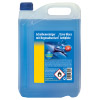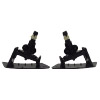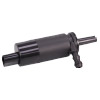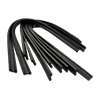wiper blade rubber for my car
Wiper blade rubber for other makes of cars
Wiper blade rubber for cars
-

3 Series
06/1975
-

GOLF
04/1974
-

5 Series
03/1972
-

A4
11/1994
-

C-Class
03/1993
-

FOCUS
08/1998
-

E-Class
02/1993
-

1 Series
02/2003
Bestsellers: Windscreen wiper rubber for car
-
-
-
£ 2,48
(Price per item)
incl. 20% VAT
-
-
-
-
£ 2,98
(Price per set of 2 pieces)
incl. 20% VAT
-
-
£ 8,48
(Price per item)
incl. 20% VAT
-
-
-
-
Best prices
Buycarparts.co.uk guarantees high-quality Wiper rubber at very attractive prices.
-
Wide choice
We currently have over 500,000 car parts in our product range.
-
Save on shipping
Free shipping within the UK applies to orders over £ 140 and excludes bulky items, tyres, or core parts.
-
Fast delivery
Catalog of Windscreen wiper rubber manufacturer
Find up-to-date offers for other spare parts for Wiper and washer system
-

Wiper blades
-

Wiper motor
-

Windscreen wiper arm
-

Windscreen washer pump
-

Wiper linkage
-

Windscreen washer jets
-

Windscreen washer reservoir
-

Screenwash
-

Headlight washer
-

Water pump, headlight cleaning
-

Washer fluid sensor
-

Brake discs
-

Shock absorber
-

Brake pads
-

Control arm
-

Engine oil
-

Clutch kit
-

Oil filter
-

Turbo
-

Wheel hub
-

Wheel bearing
Replace a Spare part Wiper blade rubber – a defective one or if the limit of use has been already reached. Find out useful information about Wiper blade rubber
Wiper blade rubbers ensure clean windows, which is naturally important in maintaining good visibility. If used together with high-quality windshield wiper fluid, they are able to eliminate dirt quickly without leaving any stains.
6 tips on maintaining and replacing wiper blade rubbers
- Wiper blade rubbers should be replaced on average every six months. As this is generally how long it takes for them to lose their elasticity
- In winter it is recommended to occasionally remove the wiper blade rubbers and clean them in warm water. They should be completely dried before they are reattached.
- If your vehicle is left outside for long periods in winter, removing the wiper blade rubbers and storing them inside is recommended.
- Wipers shouldn't be used without windshield wiper fluid as this will damage the elastic.
- It is advised to use ice scrapers and other specialist tools to remove snow and ice rather than the window cleaning system.
- If the windscreen is very dirty it is better to clean it with your hands rather than the window cleaning system.
Common wiper blade rubber problems - causes and symptoms
- Wear and tear - can be caused by using wipers without wiper fluid. Damaged wiper blade rubbers do not clean the window as efficiently.
- Loss of elasticity - usually happens if a vehicle isn’t used for a long time. When this happens the parts are not pressed against the surface tightly enough and therefore, don’t perform their functions properly.
- Cracking - is often caused by trying to get rid of ice with the wipers or using the wipers on a dry windscreen. This problems can generally be noticed by dirty stripes left on the window after cleaning it.
- Deformation - is often caused by exposure to direct sunlight for an extended period. High temperatures can melt the rubber. This issue can be seen when checking the part or can be noticed by dirty areas left on the window.
Buycarparts.co.uk is an ideal place for buying spare parts
In our online shop, you can buy wiper blade rubbers cheaply and conveniently. Specialists from the Buycarparts.co.uk online customer support are always ready to help you choose car parts. Our prices are very affordable. During our regular promotions, everything you need for vehicle repair can be ordered even cheaper. Become our customer and start shopping for car parts from the comfort of your home.
Wiper rubber finder for
FAQ: Frequently asked questions
How do I remove and install windscreen wiper blades?
The process for replacing these components depends on how they are attached and you can find the details of this in your vehicle user’s manual. Generally speaking, you should take the following steps:
- Cover the windscreen with thick fabric in order to protect it.
- Pull the wiper arm away from the glass.
- Disengage the blade from the clip and remove it from the arm.
- Carefully return the arm to the windscreen.
- Prepare the new wiper blade.
- Pull the arm away from the glass again.
- Attach the new component to the arm and clip it into place.
- Carefully return the wiper arm to the windscreen and remove the cloth.
Conventional blades are designed so that the rubber element can be replaced. To do this, unclip the blades, remove the old part, and mount and fasten the new one.
How do I choose the correct size of wiper blades?
First of all, you should be guided by the information stated in the vehicle owner’s manual. The sizes of parts are shown on the packaging and in the product descriptions on the manufacturer's and online shop’s websites. As a last resort, you can measure the length of the components with a ruler.
It is not advisable to fit parts with dimensions that differ from the manufacturer’s recommended sizes. Components that are too long may work inefficiently and get out of order faster, while blades that are too short will cover a smaller area.
Which wiper blades are best for winter conditions?
There are a few blade types intended for winter use, which differ in design:
- Conventional winter ones: these are equipped with a rubber or plastic cover. They can withstand low ambient temperatures and are affordable. However, they can be noisy when driving at high speed.
- Flat ones: these have an aerodynamic design. Thanks to their simple structure, they are durable and can easily be cleaned of ice. In frosty weather, the rubber element loses its elasticity and becomes less effective at removing water and snow from the windscreen. They are recommended for use in regions with relatively mild winters.
- Hybrid ones: these combine the advantages of both previous types. They fit tightly to the glass and clean the surface effectively even when driving at high speeds. Ice and snow can, however, get under their covers.
- Heated ones: heated blades cope with ice perfectly and don’t lose their elasticity in the cold. On the other hand, they are expensive and must be connected to the vehicle’s electrical system.
















































































































